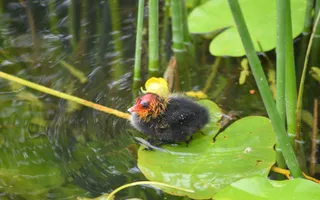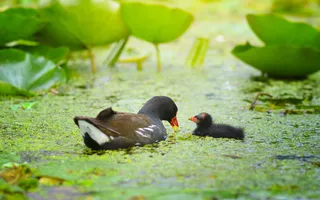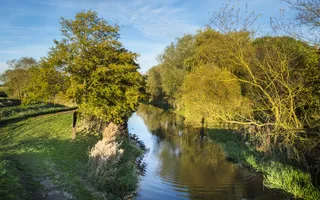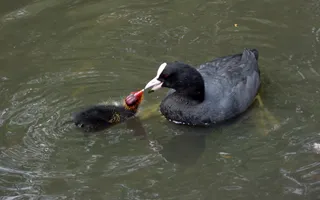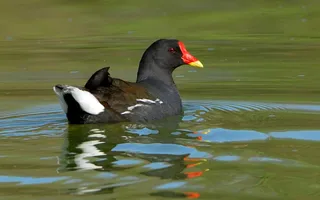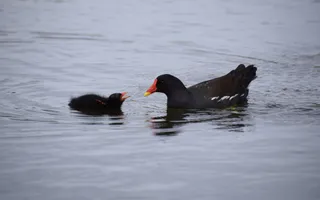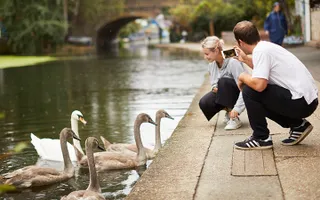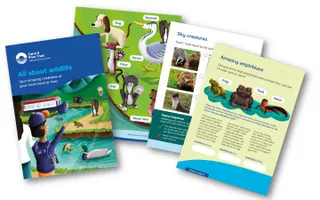While often mistaken for a duck or moorhen, the common coot is abundant on our canals.
Coot facts
Scientific name: Fulica atra
Family: Rallidae
Diet: Small aquatic animals, insect larvae, pondweed and waterside grass
Predators: Large birds of prey
Size: 36-42cm
Weight: 700-900g
Lifespan: Maximum 18 years
About coots
Round-bodied and black-feathered, coots look like ducks, especially when swimming. However, the coot is a species in its own right. They're sociable birds, living in flocks and feeding together. Although, they can become very territorial, aggressively chasing off unwanted intruders.
Strong legs allow them to walk and run well, but strong, round wings make them weak fliers. They take off by running along the water in a flurry of flapping and splashing, and their underwater dives to obtain food are clumsily executed. Thankfully, they have a natural cork-like buoyancy and bob back to the surface to consume their catch.
At feeding times, you may hear coots emit an explosive 'pitts' noise, sounding like a hammer striking an anvil. This is due to the coots' quarrelsome habit of stealing food from one another.
Coots and our canals
Coots prefer shallow, still or slow-moving water, including reservoirs, canals, rivers, ponds and lakes. Often seen swimming among ducks, swans and other waterfowl, coots are distinctive characters on our network.
How to identify a coot
Coots are all black (or charcoal grey) with a white bill and prominent frontal shield. Males tend to have a slightly wider frontal shield. They have large grey feet with flaps of skin between the toes, which are good for swimming and walking.
What do coots eat?
Unlike moorhens, ducks and other waterfowl, coots spend most of their time away from the bank, diving for food. Coots largely eat small invertebrates, aquatic animals, insect larvae, pondweed and waterside grass.
Coots bring their catches to the surface to eat – and can regularly be seen squabbling over food.
How do coots breed?
Coots lay between six to nine eggs in the spring, nesting among vegetation. They might have up to three broods a season.
The chicks are black with orange tints on the face and body with large feet. They fledge the next within two months. However, sadly, many die within the first ten days. When pressure for food mounts, adult coots can become very brutal and might attack the weaker chicks – known as a 'tousle' – to control the food supply.
Where do coots live?
Coots are widespread throughout England and Wales. Like moorhens and other waterfowl, coots prefer shallow, still or slow-flowing water. They're a common sight on reservoirs, canals, rivers, ponds and lakes. During the breeding season, they require plenty of vegetation.
Boaters occasionally find coots nesting on their boats. Find out what to do if you find a nest on your boat.
Moorhens and coots both have dark, round bodies and are often mistaken for each other. However, the colour of the beak separates the two species. Coots have a white bill and shield, while moorhens have an orange bill with a yellow tip. Although, coot chicks have reddish heads and beaks, they turn white as adults.
Moorhens also tend not to dive like coots.
Audio: Will Scott / xeno-canto.org
Threats to coots
While coots are common birds, their habitats are threatened by climate change, pollution and development.
Other species to look out for





